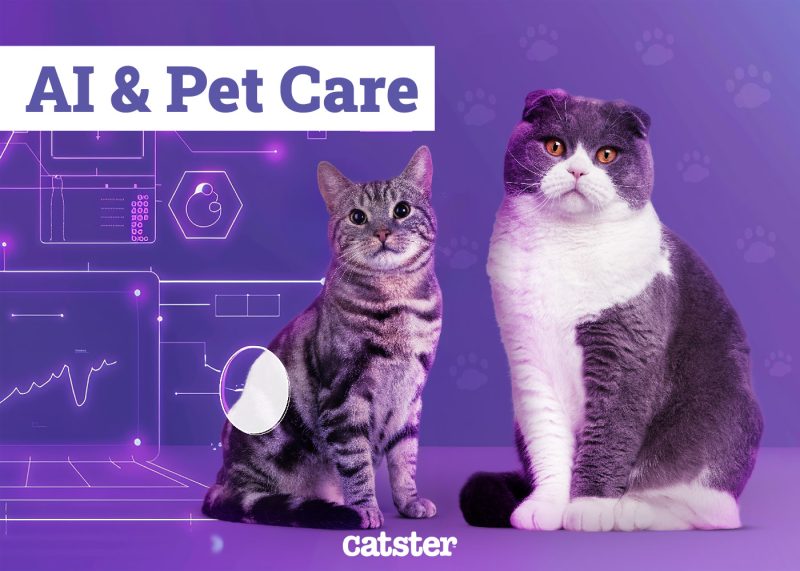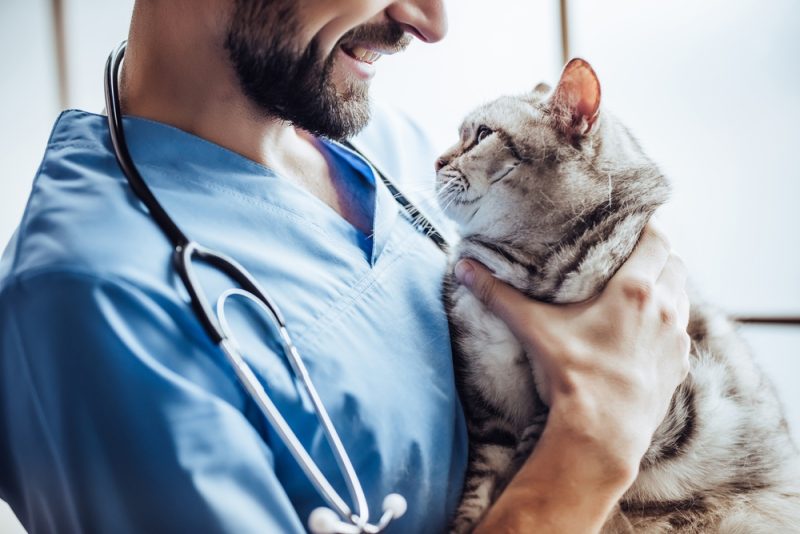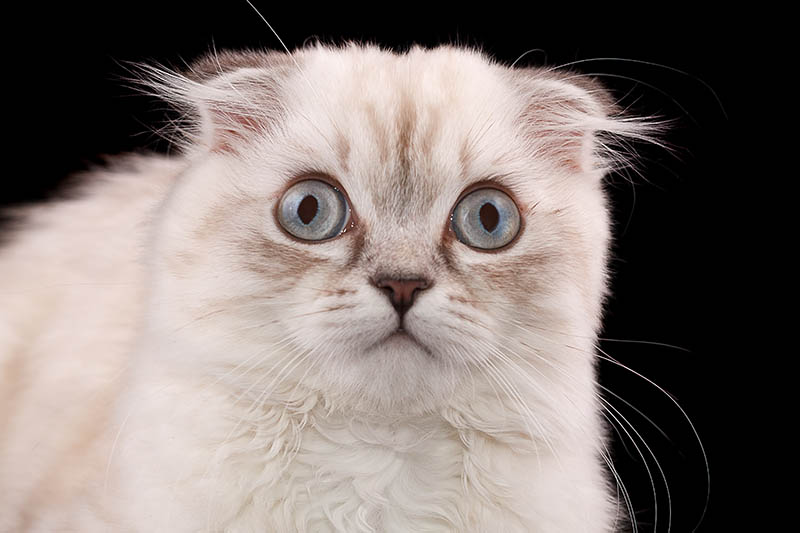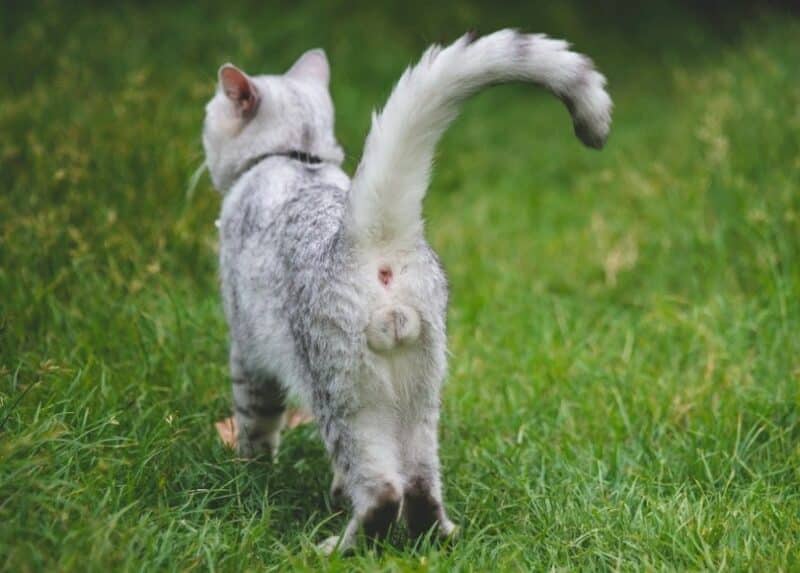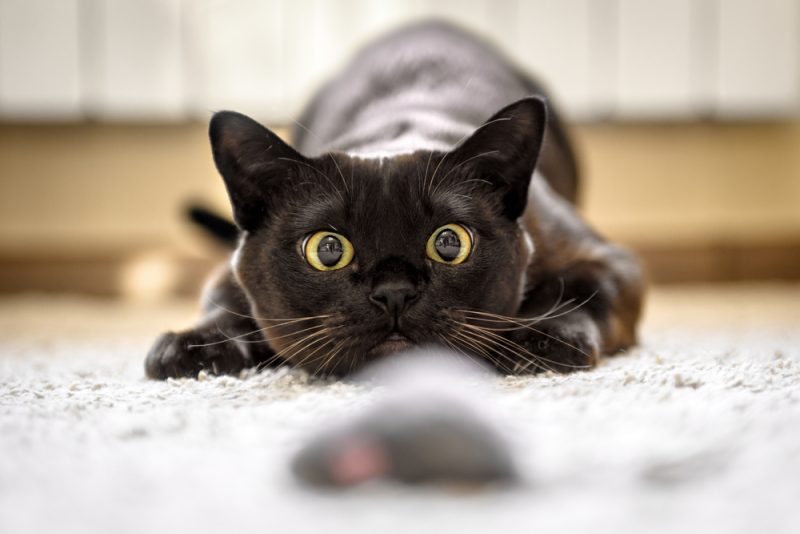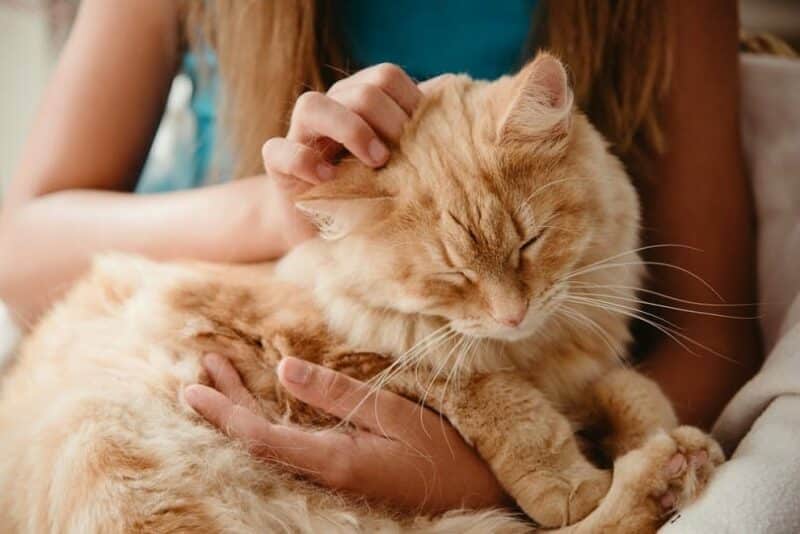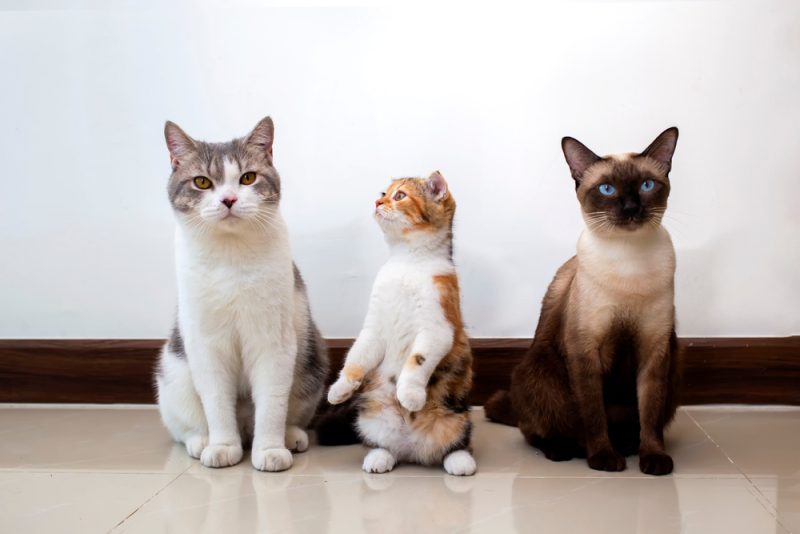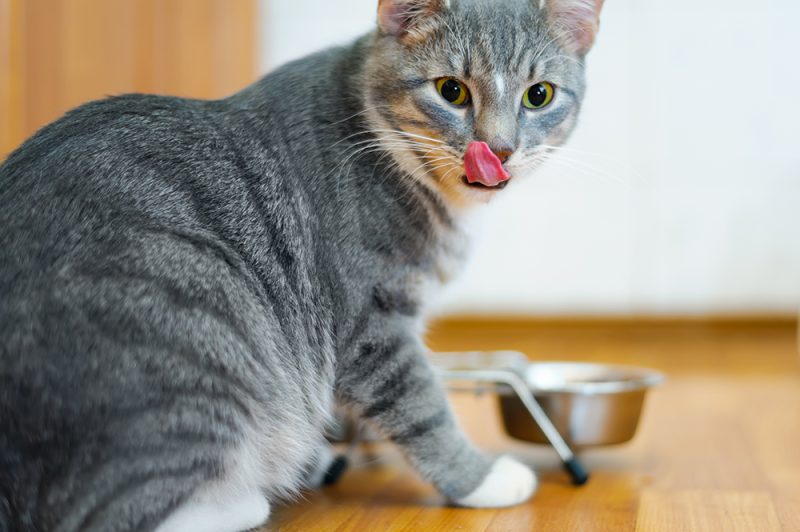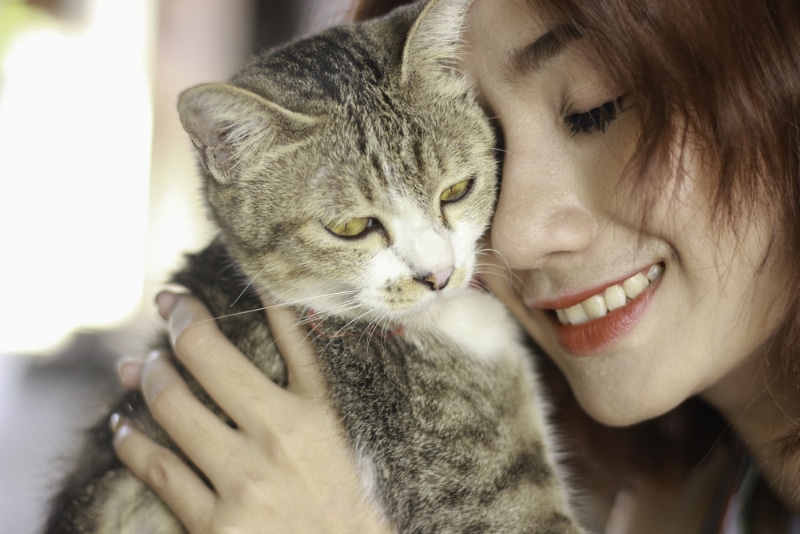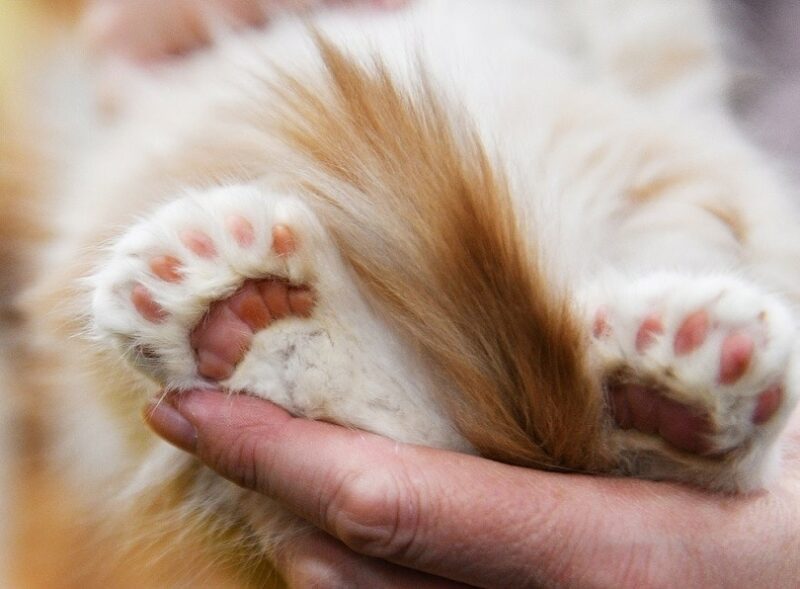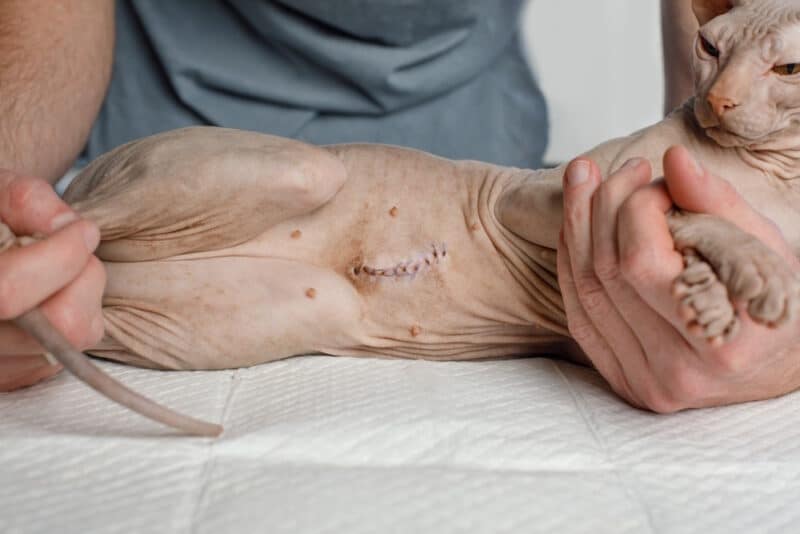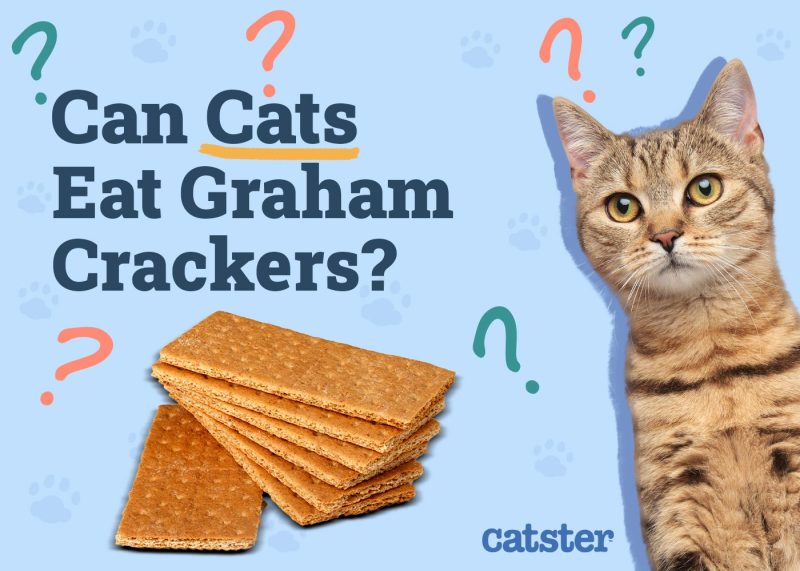As AI continues to evolve and become more integrated with the pet health and care industry, we decided to put this new technology under the microscope and investigate. Can AI be a helping hand in the veterinary field and improve the lives of vets, pets, and pet parents, or are storm clouds of misuse, misinformation, and misdiagnosis brewing?
We spoke with several of the veterinarians on the Catster team about their insights into the opportunities, challenges, and ethical considerations linked with the integration of AI in veterinary practice. We also consulted different reports and studies on its current uses in the industry to get a better understanding of its impact on the future of animal care.

Where Is Artificial Intelligence Being Used in the Pet Care Industry Today?
Artificial intelligence is used across the pet care industry, with home pet care and veterinary care being the two primary drivers of the greater industry.
AI in the Home Pet Care Industry
AI is currently used in most areas of the manufacturing, marketing, and distribution of pet care products and services, with pet wearable technology being the fastest-growing AI niche in the industry.
Pet Wearable Technologies
Pet wearable technology includes GPS collars, RFID tags, and various sensors that track a pet’s whereabouts, level of activity, vital signs, hydration, bathroom habits, how they’re feeling, and more.
How popular are tech wearables with pet owners?
- In 2022, the pet wearable market in the United States was valued at USD $800 million. (Grandview Research)
- By 2030, the pet wearable market in the United States is estimated to grow by 12.9%. (Grandview Research)
- Part of the reason the demand for pet wearables has grown is people have more disposable income. In 2021, pet parents spent approximately USD $123.6 billion on pet products. (American Pets Products Association)
- Demand for pet wearables that track a pet’s activity and health is increasing and is expected to have a compound annual growth of 15%. (Grandview Research)
Pet wearable technology gives the user more control and greater flexibility, allowing them to make smarter, quicker decisions when problems arise and provide peace of mind that a pet is safe and happy. They can alert potential health issues, and changes in pet behavior and normal routine, which gives pet parents the heads up early, so they can get veterinary care sooner, with higher chances of recovery.
- Related Read: Tractive GPS Tracker for Cats Review
AI in the Veterinary Industry
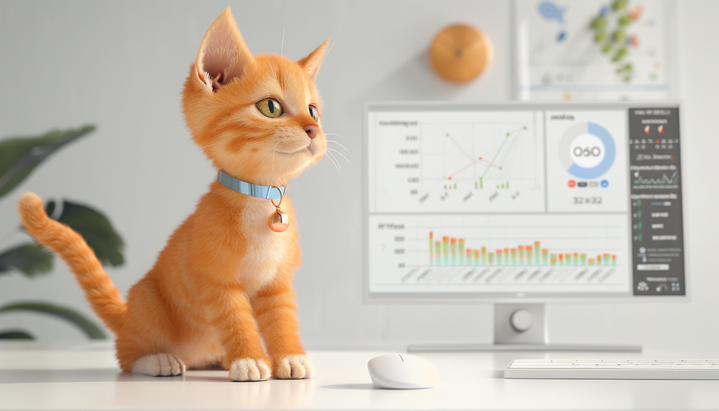
Veterinarians are using artificial intelligence in hospitals, clinics, and research in various ways. Here are some recent statistics:
- In 2023, the largest regional market, when it came to AI in the veterinary industry, was North America, at 37.8%. (Market.us)
- The companion animals segment makes up almost 74% of automated technology use. (Market.us)
- As of 2020, over 97% of vet professionals are using AI-based applications, products or services (Gitnux)
- The number of pet owners who use AI-powered veterinary care has increased by 63% from 2019 to 2021 (Gitnux)
- At this time, 39.2% of vets are using AI technologies in some way in their practices. (Digitail)
- 26.5% of vets use artificial intelligence weekly or daily. (Digitail)
- Data Management segment had the largest share of the AI in Veterinary market in 2020 at 40% (Gitnux)
- In 2020, Image Scanning held the second-largest share in AI in veterinary market (Gitnux)
Detection, Diagnosis, and Treatment
Artificial intelligence (AI) is a valuable tool in veterinary medicine, particularly when aiding in diagnosis and treatment. However, most veterinarians (ours unanimously) agree that it cannot replace human veterinary care.
“AI has its place [in veterinary care]; analyzing data sets, pattern recognition, and looking for potential drug applications are appropriate ways for it to be used. It may be useful as an additional resource for vets working up a case, but it should not be diagnosing or making treatment plans for pets. It should not become the sole source of information and decision-making for vets, and it should not be doing our thinking for us.”
Electronic communication and automated algorithms can be used by vets to assist in diagnosing and treating pet illnesses and injuries more swiftly and accurately than before.
For instance, automated algorithms excel at analyzing medical images like CT scans, X-rays, and MRIs, aiding in the early detection of conditions such as canine hip dysplasia and cancerous tumors.
Vets from UC Davis have developed an AI algorithm that analyzes blood work, accurately identifying complex patterns to detect diseases like leptospirosis and Addison’s in canines.
AI microscopy, such as Heska’s Element AIM, automates disease detection in urine and fecal samples, making rapid diagnosis possible and facilitating informed treatment decisions.
While AI enhances veterinary care by enabling faster disease detection, it is most effective when used as a supportive tool by human veterinarians, allowing pet parents to make timely decisions for their pets’ well-being.
Drug Discovery and Development
Artificial intelligence has become crucial in the discovery and development of medications for our pets.
“One ability of AI that’s often overlooked, in my opinion, is that it makes traceability much easier. AI is an amazing tool for any part of veterinary medicine that does not involve analyzing a biological system but rather involves quick calculations.”
AI’s ability to quickly sort and analyze large datasets from clinical trials, scientific literature, and health records has proven to be more efficient and accurate in identifying correlations, patterns, and potential therapeutic targets.
In the past, researchers had to sort through vast datasets themselves. These traditional methods were prone to oversight and human error, but AI minimizes these and speeds up the screening process, leading to both cost and time savings.
Once data has been analyzed, this technology can help researchers develop predictive models and hold virtual screenings of drug compounds to identify potential drug candidates more efficiently. This brings veterinary medicine one step closer to finding the best treatments for pet illness and disease.

How Do Our Veterinarians Feel About AI in Pet Care?
We surveyed several vets on Catster’s team about their views on artificial intelligence in veterinary practice.
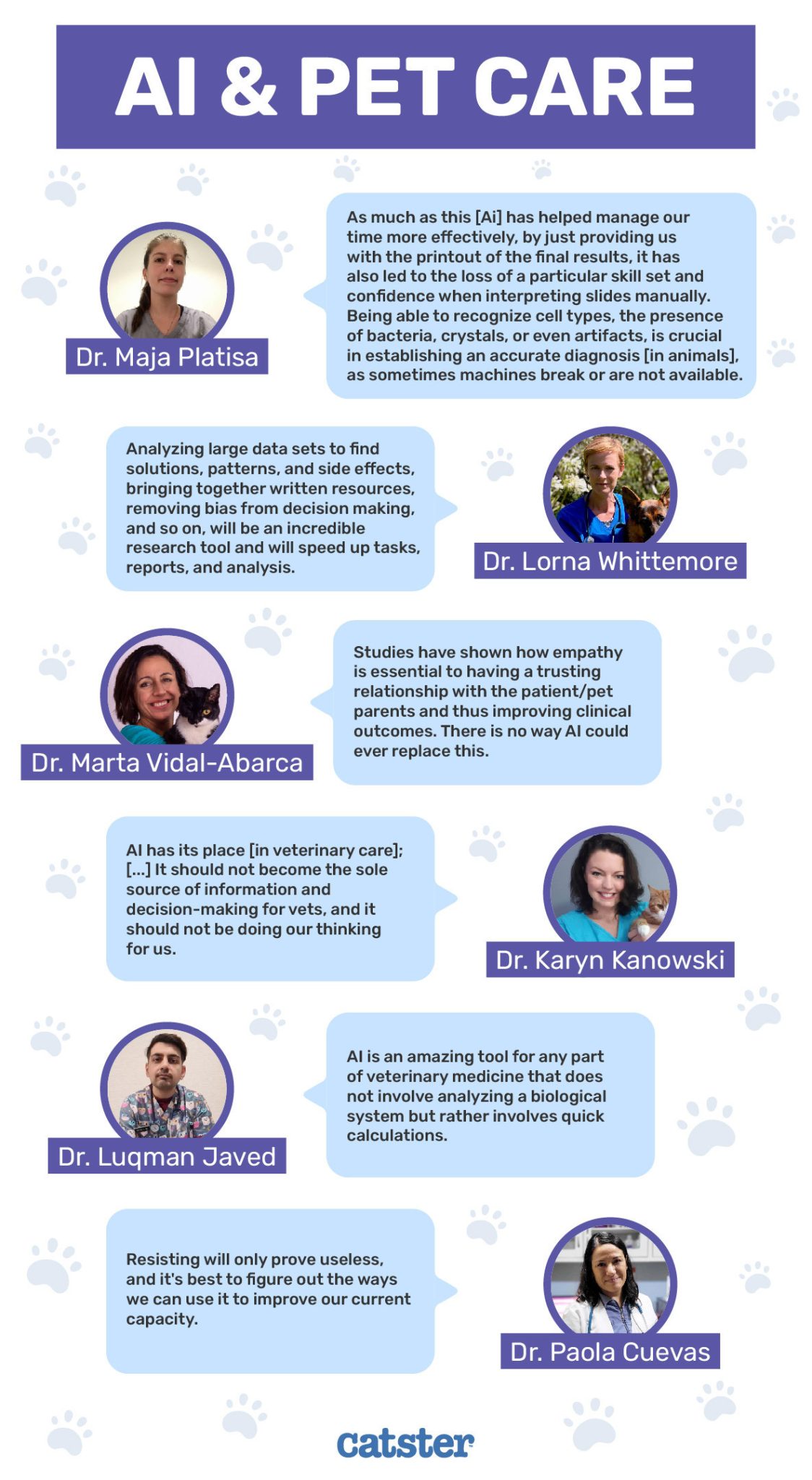
Opinions varied on many questions we asked, but six key points were unanimously agreed upon:
- Replacing humans with AI in medicine is dangerous, ineffective, and not possible.
- AI is extremely beneficial as veterinary support.
- It lacks the tailored vet care that humans provide.
- AI simplifies time-consuming or tedious tasks.
- AI lacks human empathy and reasoning skills.
- Vets support using AI in the pet care industry, but stress tech limitations and precautions.
Our veterinarians vary in their views on AI applications in vet practice, but most vets agree AI will play a part in pet care and is beneficial if used correctly.
“Resisting will only prove useless, and it’s best to figure out the ways we can use it to improve our current capacity.”
In general, our vets see AI aiding in tasks like drug research and pattern recognition. While recognizing AI’s limitations, they emphasize its clear benefits. Vets stress that AI can’t replace humans entirely in diagnosis due to lacking essential human qualities. Despite potential challenges, they embrace AI’s role in improving patient care with more tools at their disposal.
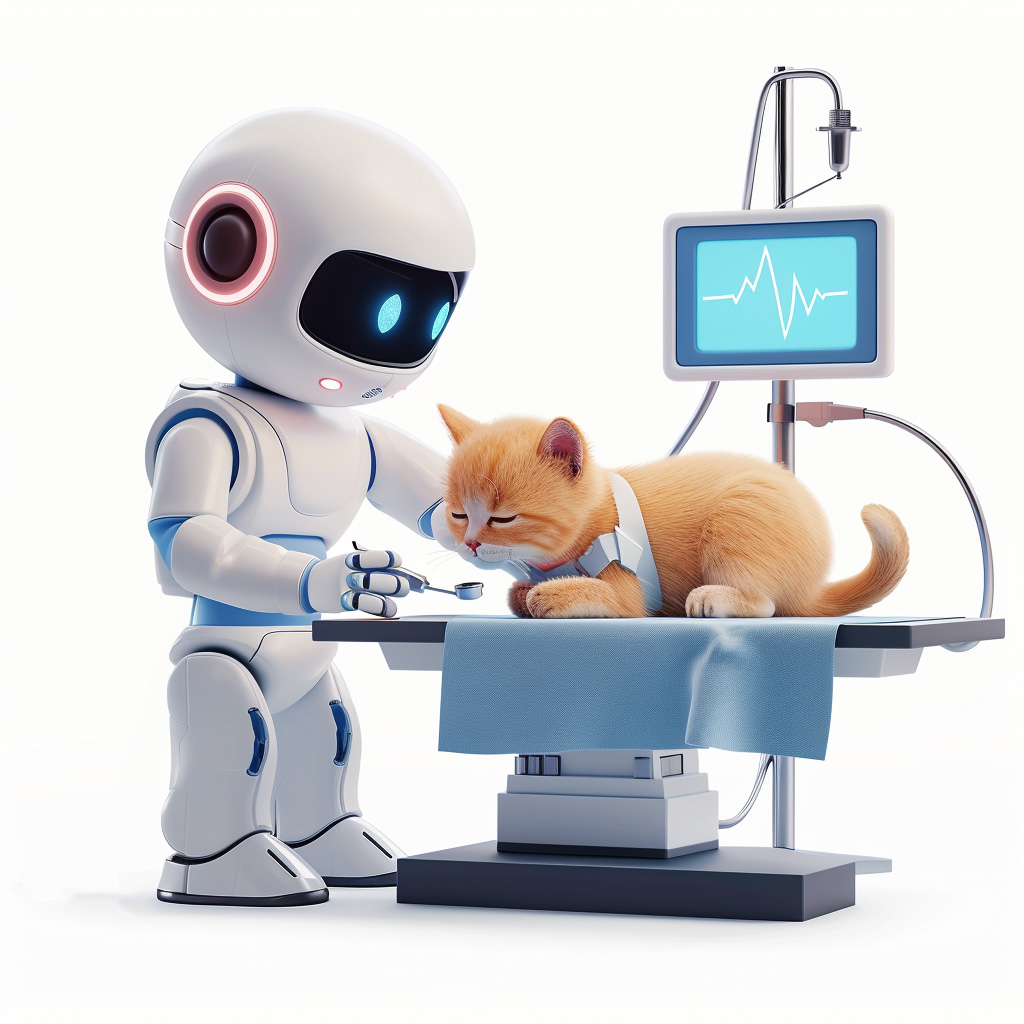
Do Vets Think AI Could Ever Replace Them?
All the vets we spoke to said artificial intelligence could not replace actual veterinarians (so you don’t need to worry about your cat or dog being seen and handled by a robot any time soon!).
“Medicine is not an exact science. Each clinical case is different, each patient and each family has their own particularities, and all these variables are taken into account by the veterinarian in order to treat and improve the patients’ lives. There is no way AI could ever replace this. Studies have shown how empathy is essential to having a trusting relationship with the patient/pet parents and thus improving clinical outcomes.”
Essentially, veterinarians agreed that people and animals cannot be entirely reduced to algorithms and data, and replacing vets with robotization would be detrimental to patients.
However, Dr. Kanowski said, “My concern is that, with large corporations buying veterinary practices and making decisions about how those practices are run, we will see more and more decisions based on profits rather than on patient care or staff development and well-being.”

Pros of AI in Pet Care According to Vets
AI brings significant advantages to veterinary care, like improving diagnostic accuracy through image analysis and enabling continuous patient monitoring. It also simplifies tasks such as checking drug databases and monitoring illnesses, contributing to better patient outcomes.
- Providing tools for labs, pharmaceuticals, food formulation, etc.
- Enhancing surgeons’ control, visibility, and precision, reducing complications
- 24/7 patient monitoring
- Aiding vets in identifying environmental management, prevention, diet, etc.
- Rapidly checking drug databases and identifying interactions
- Monitoring illnesses like diabetes
- Creating personalized pet meal plans
- Providing detailed sample and result analysis
- Tracking subtle changes in farm animal behavior and performance
- Offering accessible healthcare information for pet owners
- Enhancing communication between veterinarians and pet parents
One widely agreed-upon benefit amongst our veterinarians is its ability to analyze large amounts of data and recognize patterns.
“Analyzing large data sets to find solutions, patterns, and side effects, bringing together written resources, removing bias from decision making, and so on, will be an incredible research tool and will speed up tasks, reports, and analysis.”
The sky’s the limit when it comes to the ways AI can benefit the veterinary field. However, that doesn’t mean there aren’t potential downsides to veterinarians using this advanced technology.
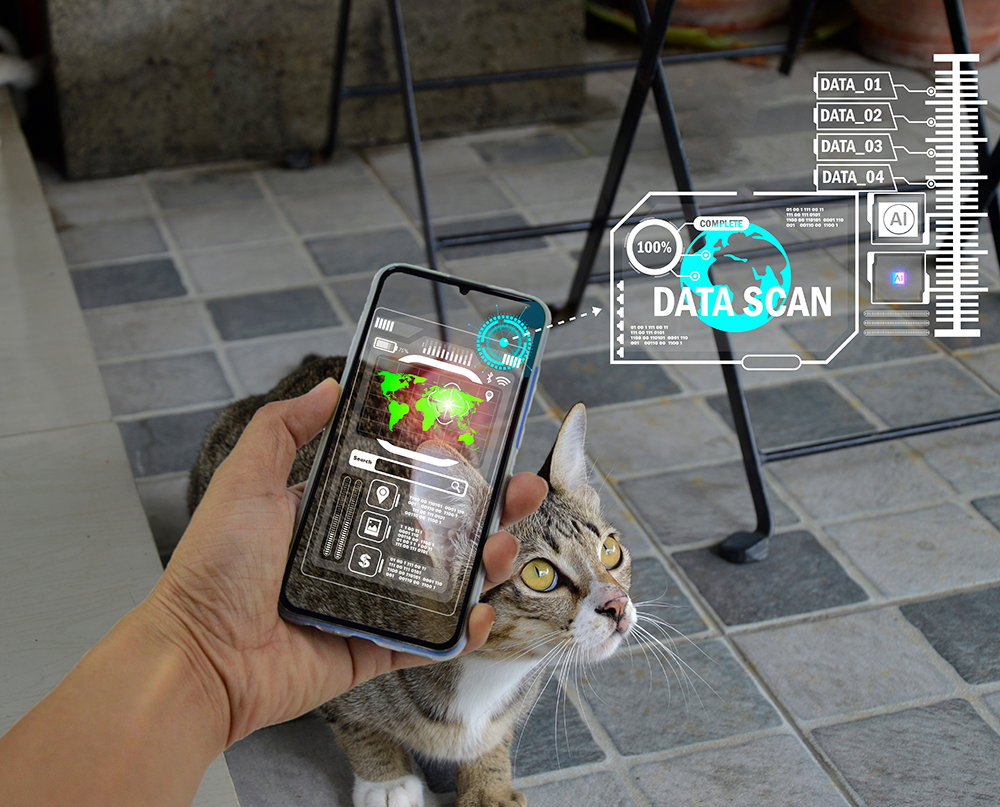
Cons of AI in Pet Care According to Vets
When considering the drawbacks of AI in veterinary medicine, several concerns arise.
- Dependence on technology may reduce a vet’s clinical skills and judgment
- Data bias and quality issues can lead to inaccurate predictions
- Ethical concerns arise regarding accountability for errors
- Privacy and security risks accompany access to sensitive data
- Implementation costs may limit access to AI-driven care
- Loss of personal connection between veterinarians and clients is possible
- Robotization in veterinary care can create mistrust among pet parents
One con mentioned several times was the use of robotization, which could lead to mistrust from pet parents, especially those unfamiliar with AI. Relying on automation too much during diagnosis and treatment can make pet parents lose confidence in vets. If vets solely depend on the technology without double-checking, it could lead to significant errors, further eroding the trust.
Similar to human medicine, where humans prefer human doctors, pet owners may doubt AI’s ability to understand their pet’s unique needs. Depending too heavily on the technology, like strictly following a textbook for diagnosing and treating pets, may not recognize the nuances and subtleties of a pet’s condition, affecting the care.
Excessive reliance on AI may lead to vets losing certain skills, as some tasks become automated, potentially impacting overall care quality.
“We used to have a laboratory machine software that allowed automatic analysis and interpretation of urine sediment slides by recognizing various cell types and urinary crystals, and it allowed us to save some time not looking at the slides manually. As much as this helped manage our time more effectively, by just providing us with the printout of the final results, it has also led to the loss of a particular skill set and confidence when interpreting slides manually. Being able to recognize cell types, the presence of bacteria, crystals, or even artifacts, is crucial in establishing an accurate diagnosis, as sometimes machines break or are not available.”
Finally, AI in the pet care industry may discourage pet parents from seeing a vet until it’s too late. With more of this type of technology around, pet owners may think they can diagnose their pets on their own and treat them accordingly, and that would be disastrous.
Dr. Whittemore says, “It may be that animal guardians delay seeking advice and hands-on care as they would rather follow advice from AI in the comfort of their home. Only to reach out for veterinarian help when the situation worsens.”

Where Will AI Be Used in the Pet Care Industry in the Future?
As you can see, AI is already prevalent in a few areas of the pet care industry, so you can imagine it will only be more so in the future. But what areas of the pet care industry will most likely see an influx of automatic technology?
Well, here’s what we know about it in the current market:
- In 2022, machine-learning hardware (such as pet wearables) accounted for 63.40% of the revenue share for the market. (Grandview Research)
- Artificial intelligence software (such as services and deep learning devices) is expected to grow the quickest, at 20% by 2030. (Grandview Research)
- AI diagnostics in 2022 accounted for 50% of revenue share. (Grandview Research)
- In 2023, pets accounted for 73.9% of the market share when it came to using AI. (Market.Us)
It seems that the software and diagnostics portions of the AI market will continue to grow rapidly, even as the hardware segment grows.
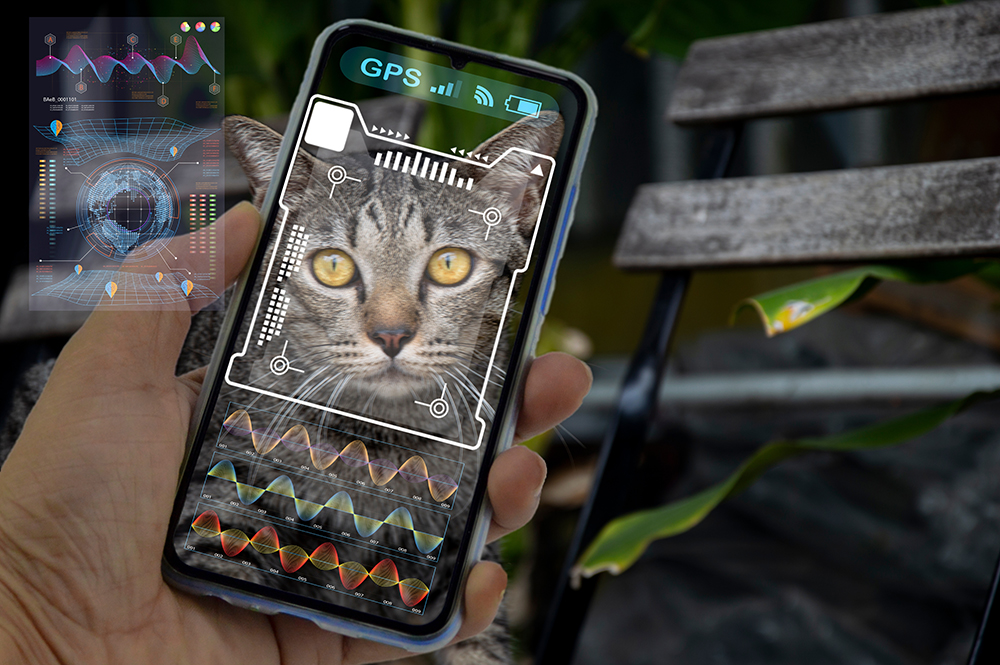
How Are Vets Currently Making Use of AI in Their Clinics?
When asked about their current or prospective use of AI in veterinary practice, only Dr. Javed indicated he is currently using AI; his practice has incorporated it to help design custom meal plans for cats and dogs based on their needs.
Some vets had prior experience with advanced technologies, such as a veterinary radiology service with AI assistance with human oversight, and Dr. Platisa utilized AI for automated urine sediment analysis.
The veterinarians not currently using AI said they see its potential applications for research, data processing, analysis, or booking.
While AI appears limited among our surveyed vets, its presence in veterinary clinics, as attested by the 39.2% of vets utilizing it (Digitail), suggests diverse applications within the industry.

Final Thoughts
Our veterinary experts offer diverse perspectives on the integration of artificial intelligence (AI) in pet care. While some anticipate its potential to enhance veterinary practice and healthcare, others harbor concerns.
Dr. Vidal-Abarca says, “AI is here to stay, but I hope it is regulated properly and does not flood our lives and jobs,” and emphasizes that the regulation should prevent AI from overshadowing the vital role of veterinary professionals.
Our veterinarians unanimously agree that AI should complement rather than replace human expertise, recognizing that biological systems are nuanced, highly individual, and complicated, which makes humans more capable of understanding them than artificial intelligence.
Dr. Javed sums up, “Remember that veterinarians are not anti-AI. We are pro-animal care and welfare. When AI is used in an attempt to replace us, it tends to become anti-animal care and welfare. When it helps us, though, we, in turn, provide better care for all animals and people as well; after all, public health is a huge part of veterinary care as well.”
Some vets worry that AI integration in vet clinics could accelerate corporatization, potentially diminishing empathy and personalized care. They fear that prioritizing profitability may lead to reduced staffing, as technology doesn’t require salaries.
As Dr. Platisa says, “Like anything in life, it’s important to gather enough information and verified facts, and understand why and when certain technologies can be good in particular situations and what their limitations are, while understanding the importance of a human in the process.”
Balancing the ethical considerations and practical implications of AI in pet care is crucial. While the future remains uncertain, ensuring artificial intelligence is used appropriately in the pet care industry will go a long way in boosting its usefulness
